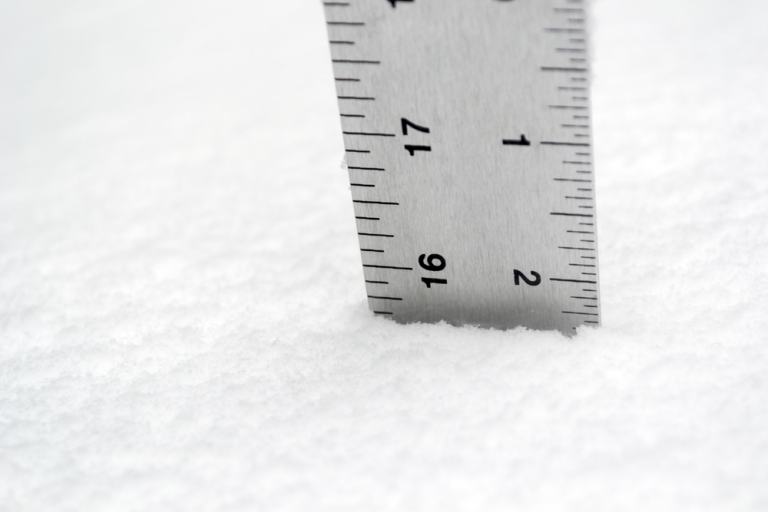How to Measure Snow Accurately ?

Snow measurement is not an activity that is limited to snow specialists and climate observers. It can be quickly done by anyone if you know how to do it and have the right tools.
The perfect snow measurement is one which is accurate within a tenth of an inch. It is also a timely measurement. Timing is everything when it comes to measuring snow accurately. You don’t want it to be melting and drifting before you can get the readings.
Steps to measure the snowfall involve some necessary steps. These are:
1.Gather your supplies
The first step in the process of snow measurement is to assemble the tools. You will need a small to medium flag. A brightly colored one will improve its visibility. If you don’t have a flag, any sturdy and long stake will also work as well.
A measuring device such as a ruler or yardstick. A square whiteboard measuring 24 inches by 24 inches. If you want your readings to be as accurate as possible, use only a whiteboard. It will reduce the heat from the sun as well as the environment.
2.Plan the Process
The next step is to plan. An ideal place to measure snow is finding a wide open area. It should be away from tall structures such as trees, poles or a building. These can obstruct the snowfall. You want to make sure that the area is not exposed to the wind as it will blow away the snowflakes and accelerate melting. Take care not to conduct the measurement from porches or decks.
3.Performing the setup
The set up should be put into place before the snowfall begins. Otherwise, it will not be accurate. Lay down the whiteboard and firmly stick the flag next to it. This will make spotting easier.
4.The actual process of measuring the snow
The best way to ensure the accurate measurement is to do it during the same time every day. Next, carefully slide the ruler in the snow until you feel it hit the board. Record the reading on the ruler. If the snow does not hit an exact number, read it to the closest tenth of an inch. Write down your recordings.
After you’ve recorded the first measurement, remove the whiteboard, wipe it clean and place it on top of the fresh snow. This will allow you to record the measurement for the next snowfall.
An important thing to remember is that snow measuring should never be done while the snowflakes are still falling. You must do it only after it has stopped but before the winds start blowing or the rains come. Taking a recording once every 24 hours is ideal.
Remember, this is the depth of the freshly fallen snow. If you need to measure the overall depth of the old and fresh snow, make sure to stick the ruler all the way till it hits bottom or the ground.
5.What to do when the snowfall ends
Snowflakes are fragile. Some don’t even hit the ground before they vanish into thin air. If you have undertaken the process of measuring snow, you need to be alert and watch the changes in the weather. You want to be able to record your readings as soon as the snow stops falling.
Readings after the snow have settled or drifted will not provide an accurate measurement. And it is no use after it has started melting.
6.What to do with your snow recordings
An accurate recording of snow falls is a piece of invaluable information for the weather office. It is also very important to the local media as well as the community. The density of snowfall can significantly vary from place to place. And the weather experts or the reporters are not omnipresent. Therefore, if you are confident that your readings are timely and accurate, it is time to send in the report.
You could do this through social media or directly contact the weather offices through their website.
Conclusion
Conducting a snow measurement can be fun as well as informative. Although it is not up to you to report to the weather offices and the media, everyone can use extra help. Especially during a momentous event as heavy paralyzing snowfall.